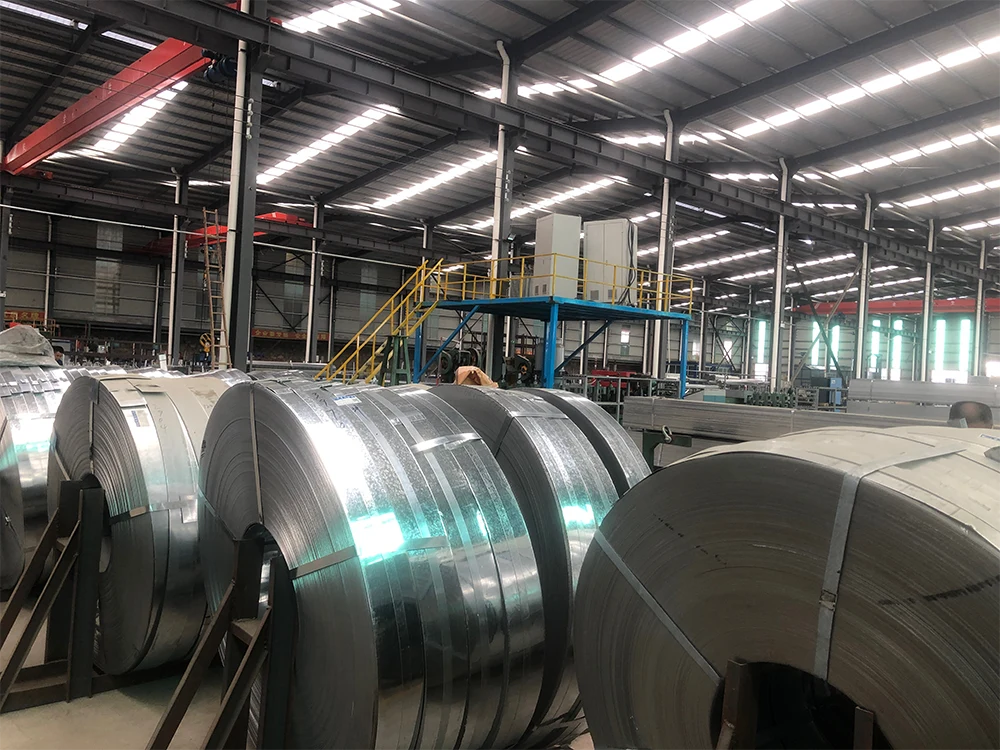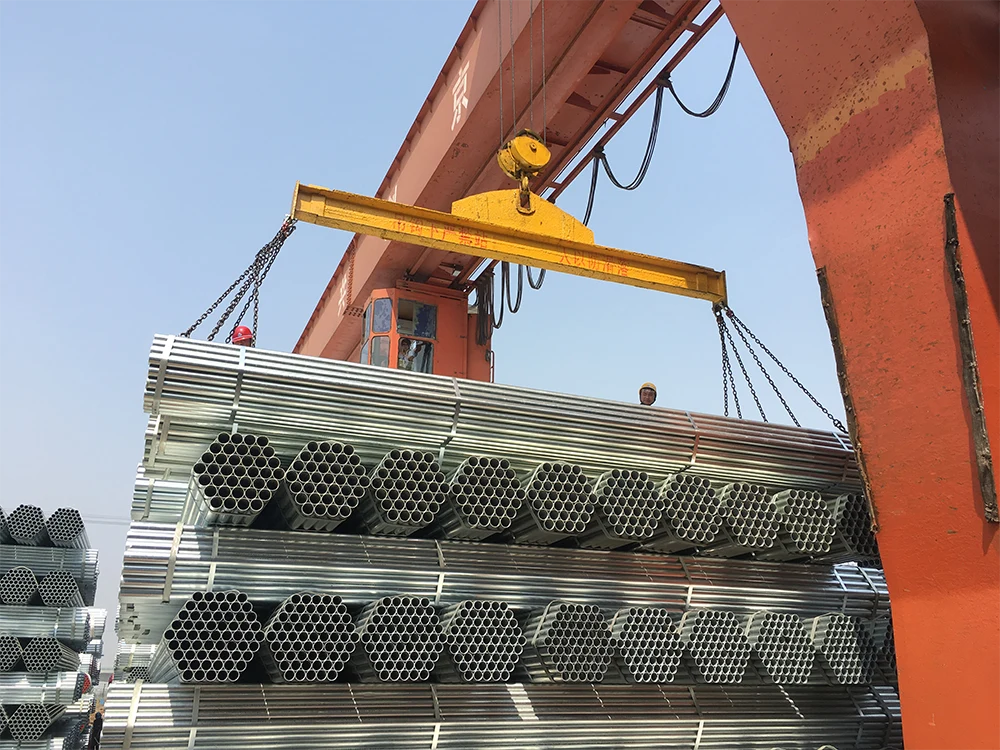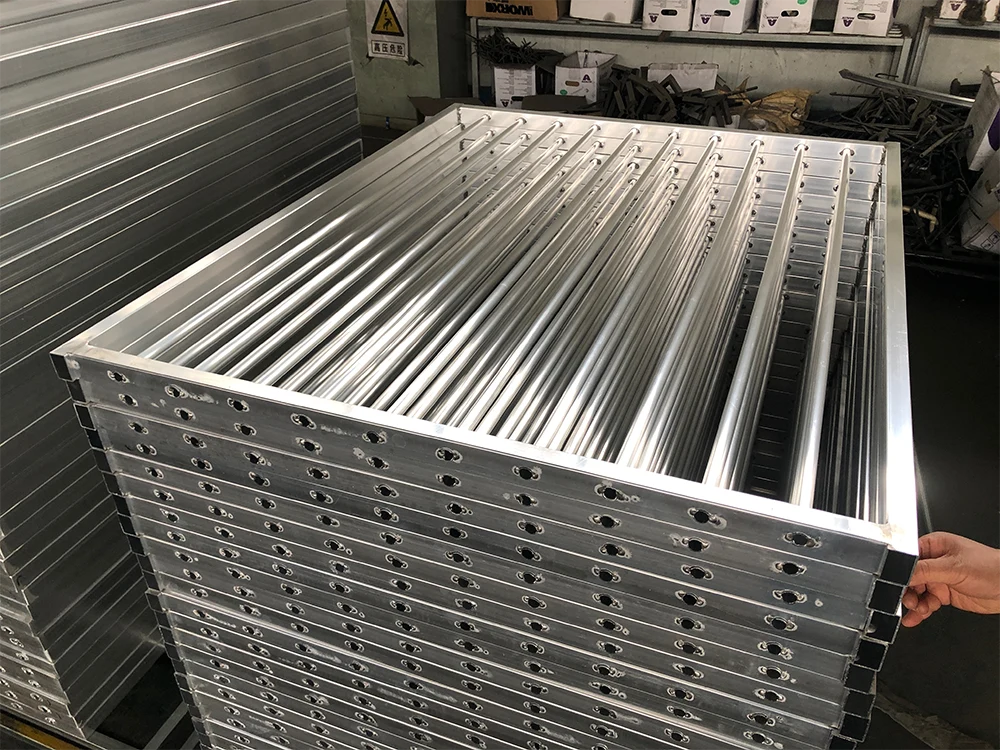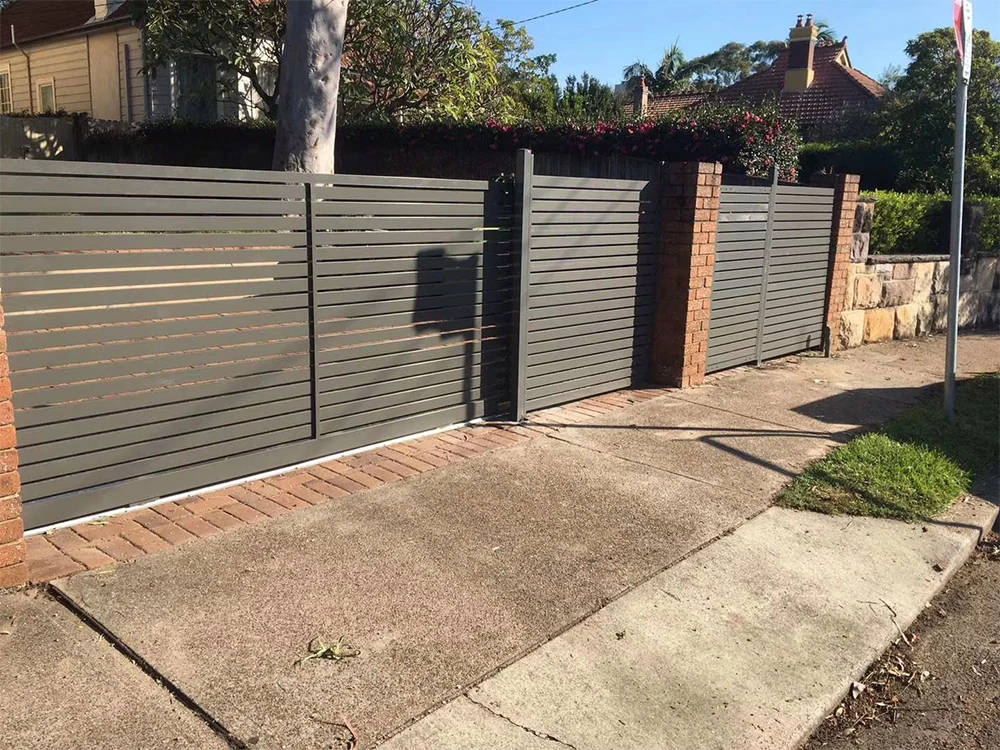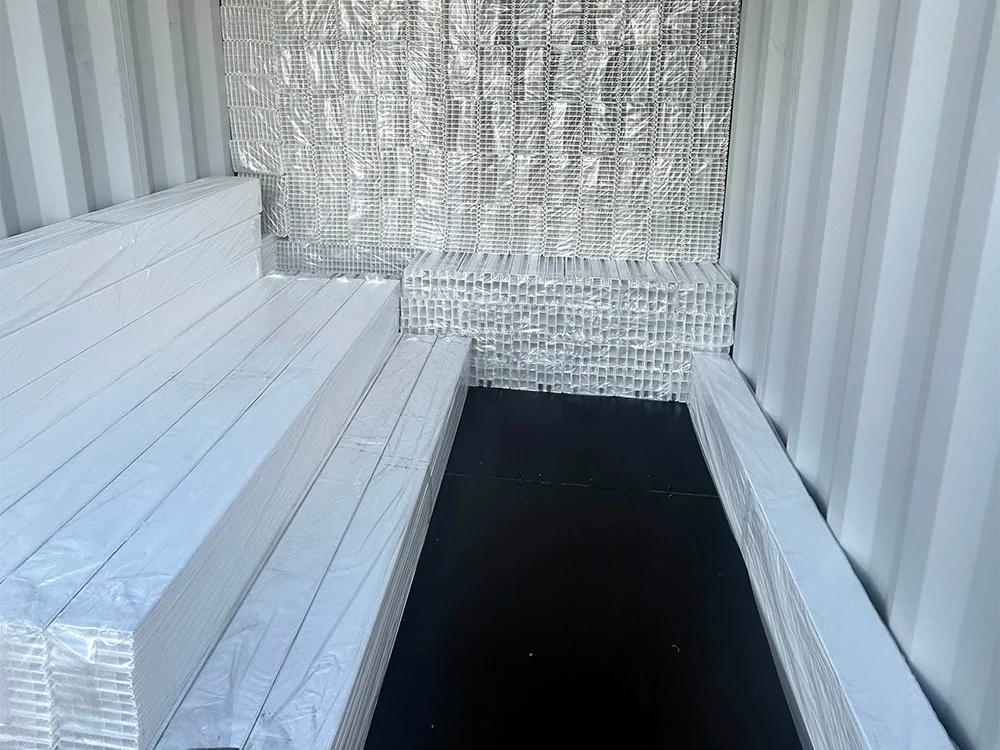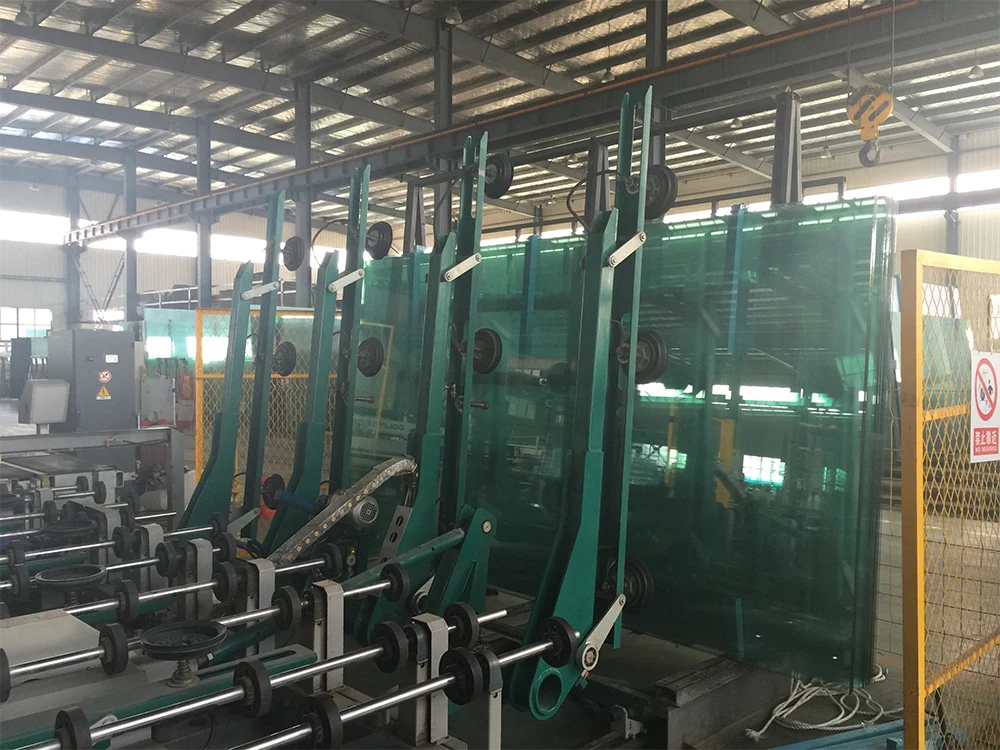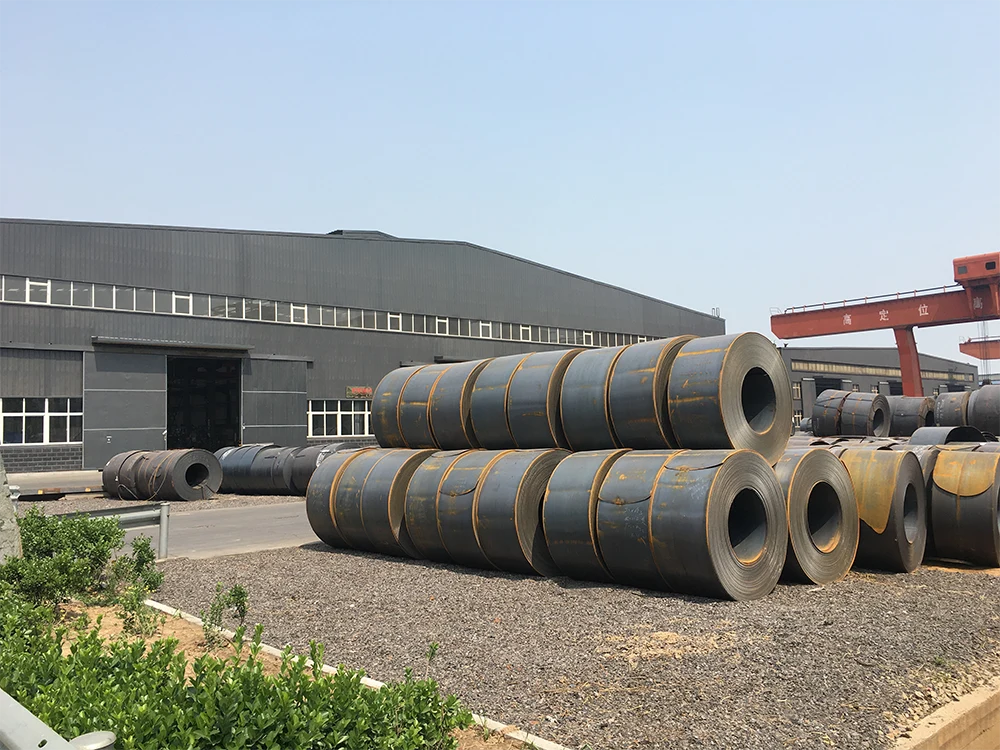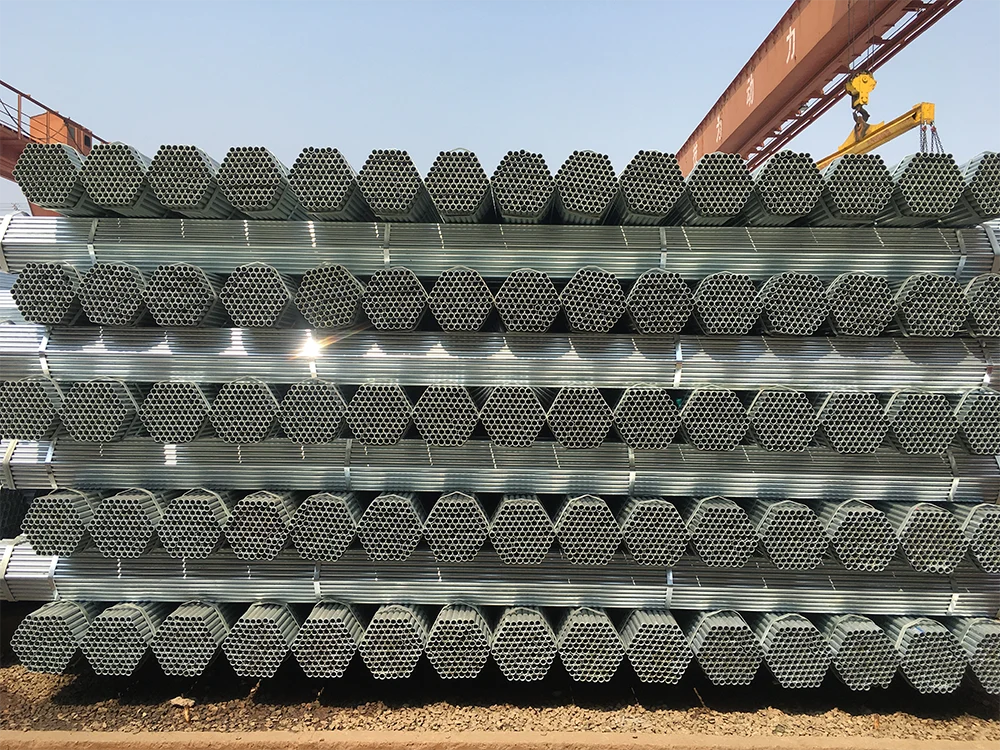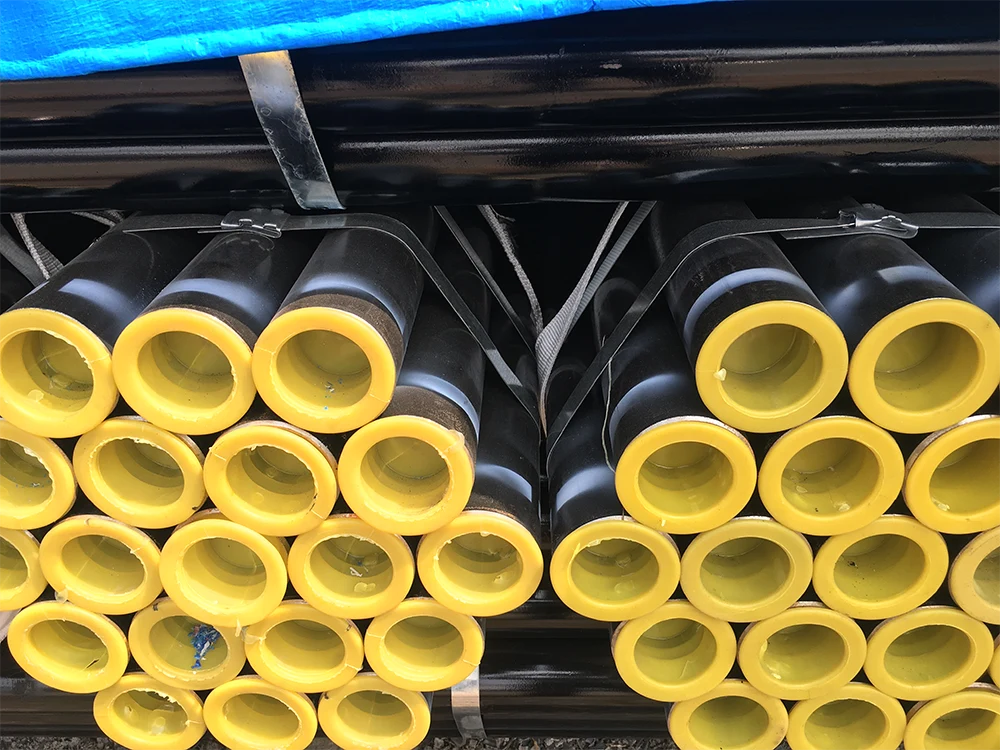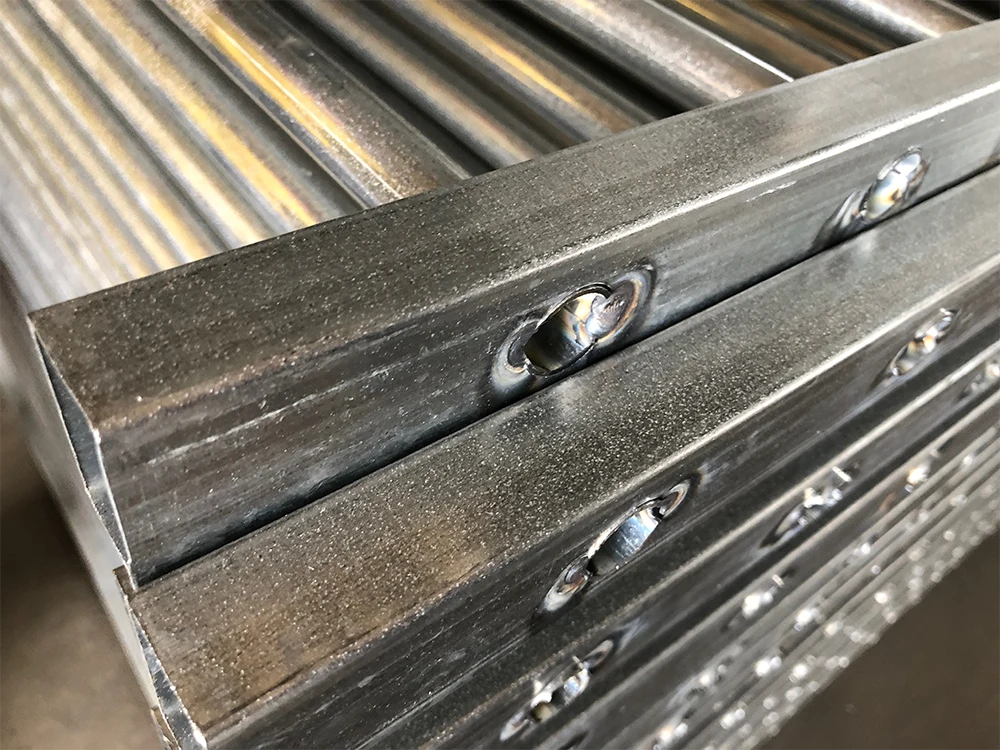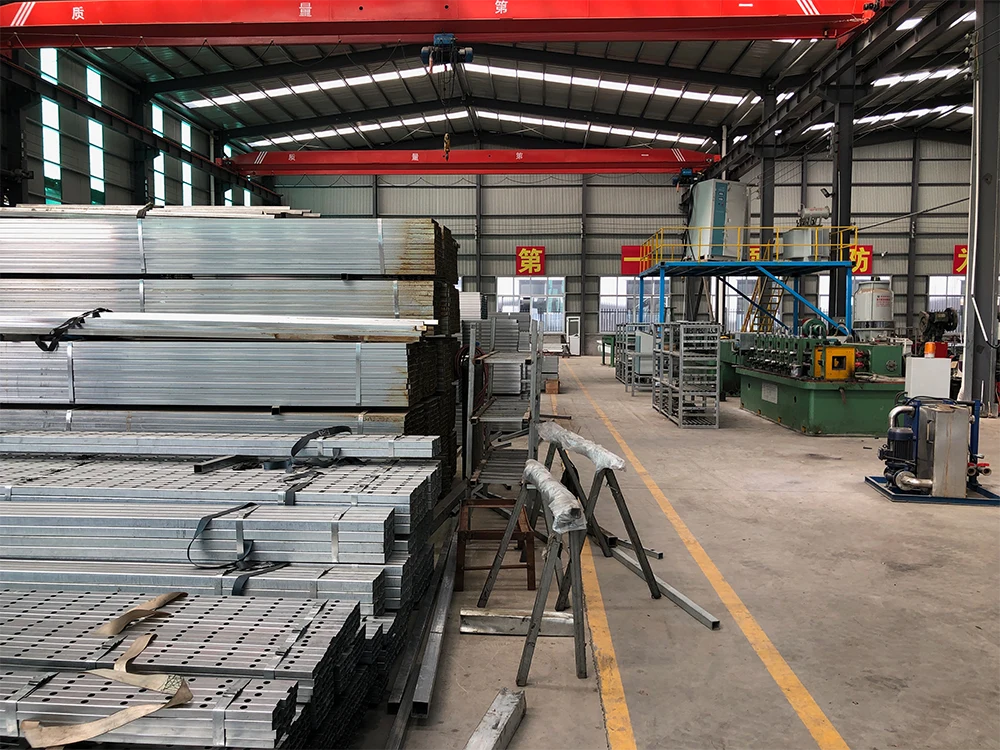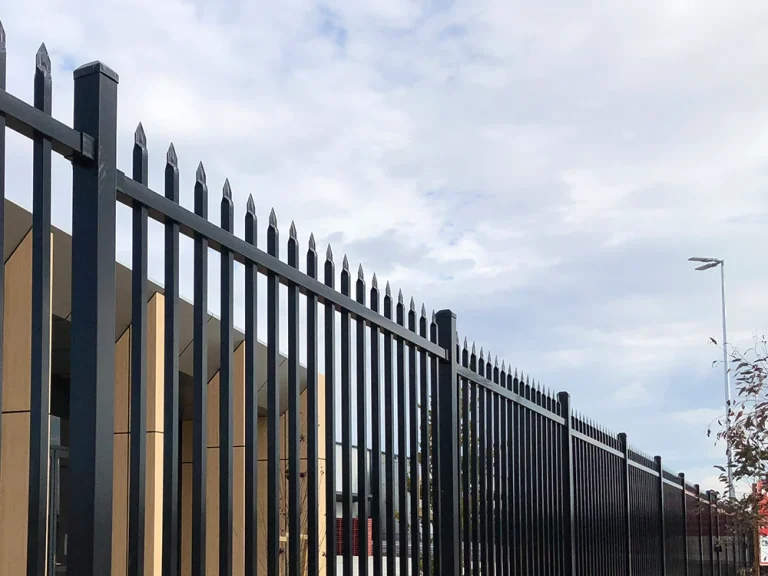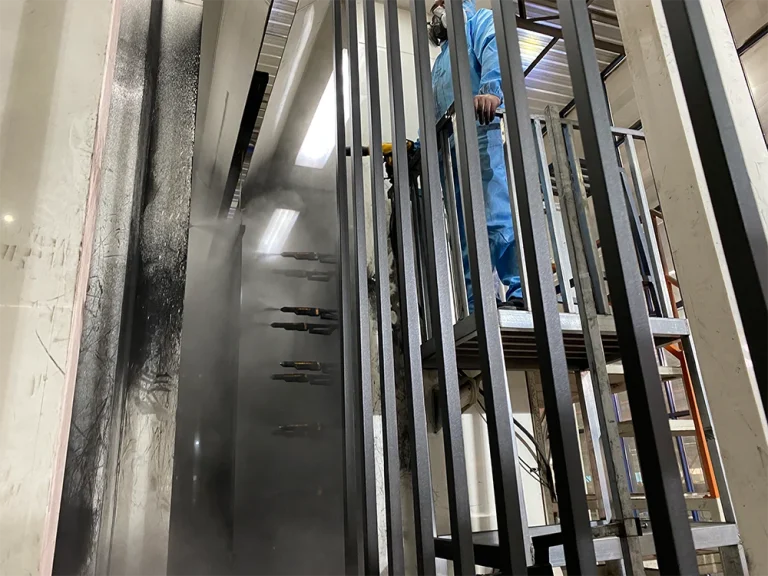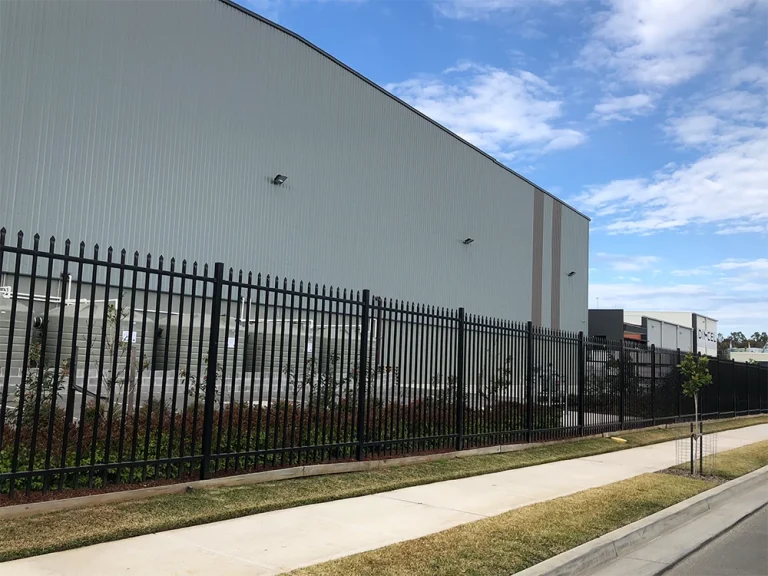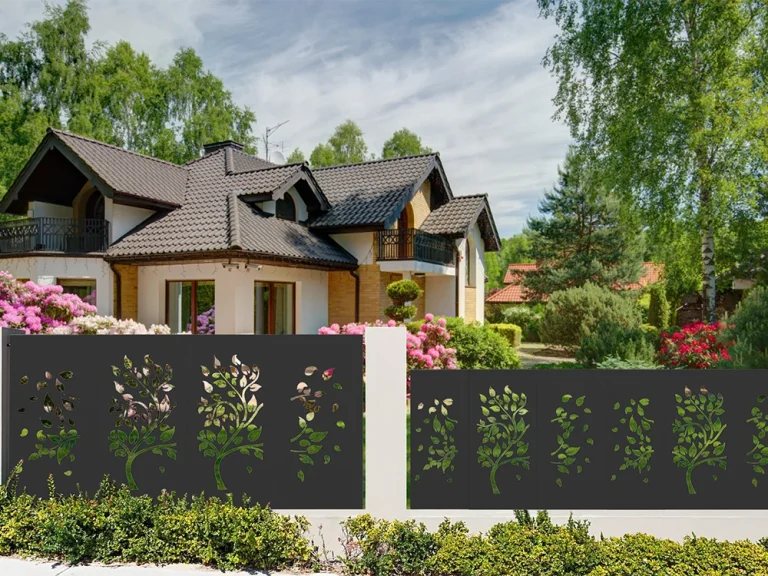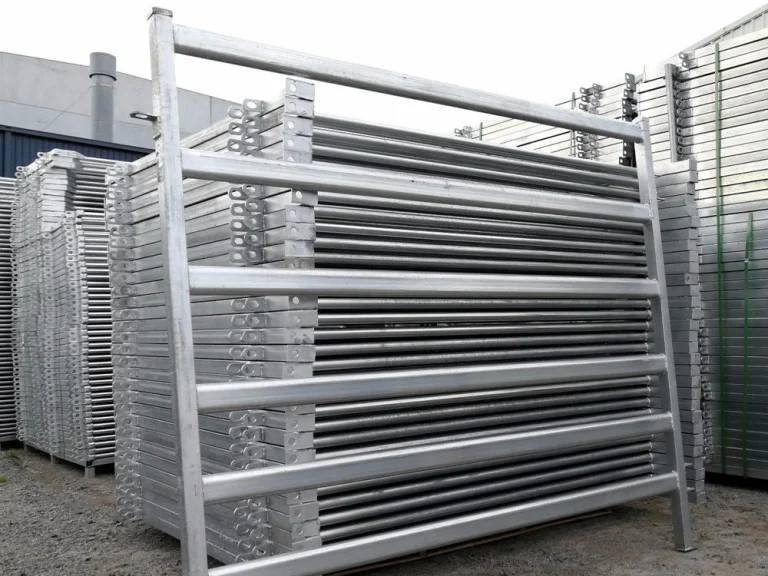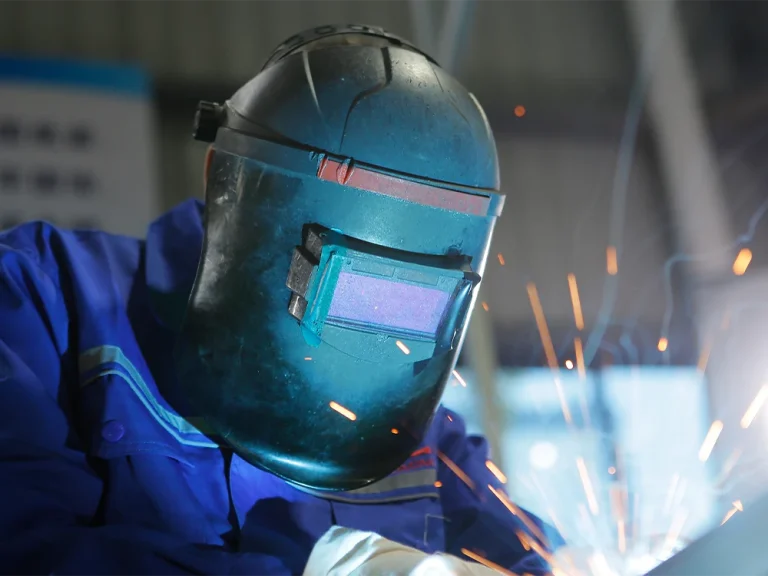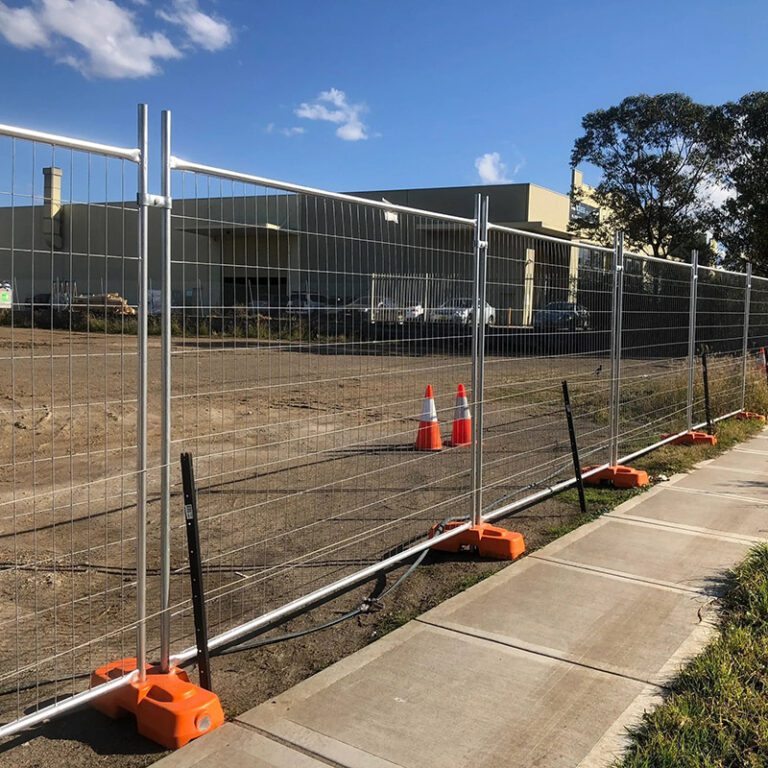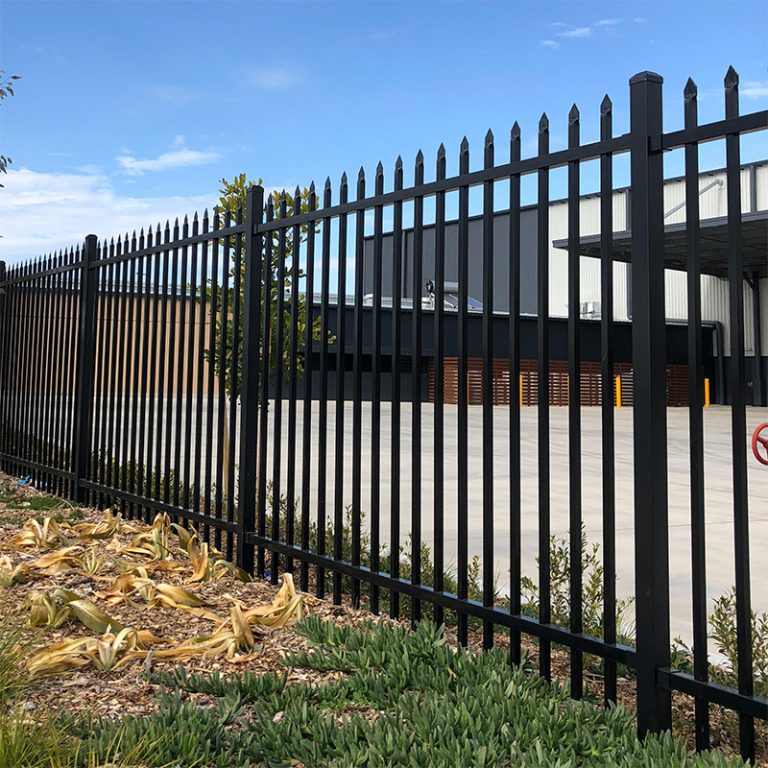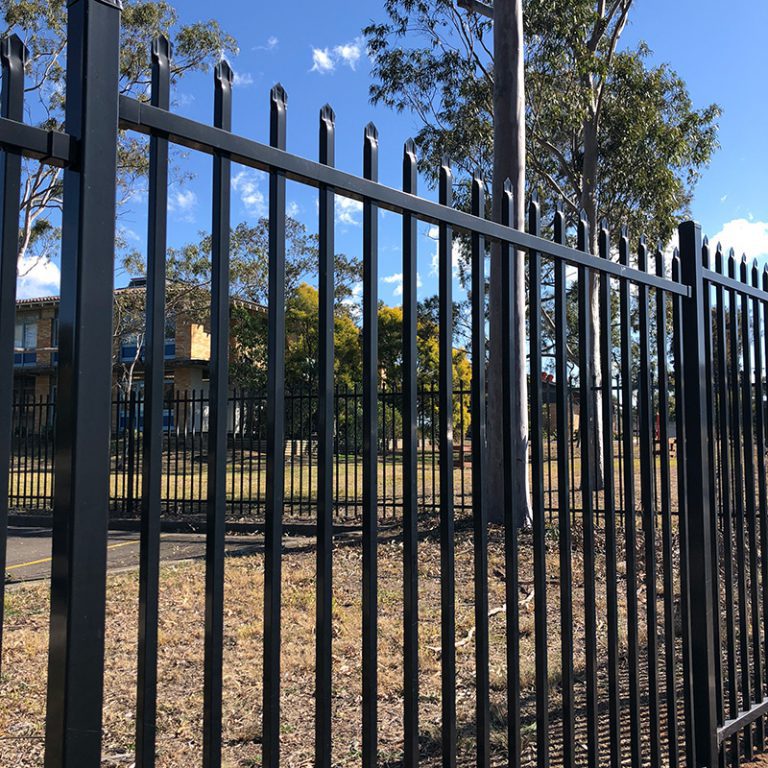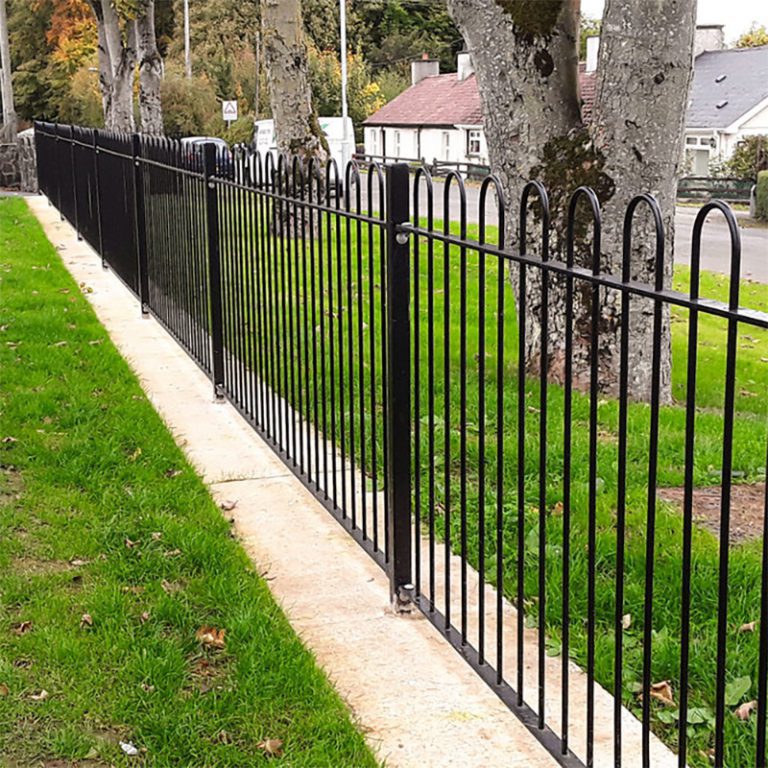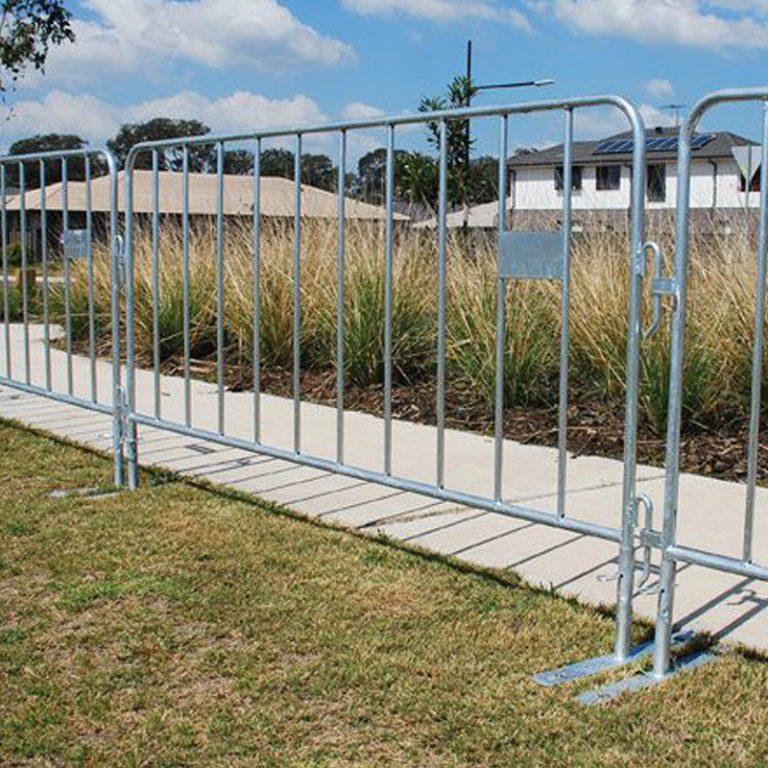Selecting the right raw material is a crucial step in the fence production process, as it directly impacts the fence’s durability, appearance, and maintenance requirements. Whether you’re looking for the strength of metal fences or the natural beauty of wood, each material offers its own set of advantages and challenges. In this blog, we will explore eight of the most commonly used materials in fence manufacturing, breaking down their strengths, weaknesses, and ideal applications. This guide is designed to help you make an informed decision by understanding the unique properties of each fence material.
Fence Raw Materials
1. Carbon Steel
Advantages:
– High Strength: Carbon steel is known for its exceptional strength, making it ideal for heavy-duty applications such as security fences.
– Affordability: Compared to stainless steel, carbon steel is more affordable, making it a popular choice for large-scale projects.
– Easy Customization: This material is easy to cut, weld, and shape into various designs.
Disadvantages:
– Corrosion Risk: Carbon steel is prone to rusting if not properly coated or treated.
– Maintenance Needs: Regular maintenance, such as painting or applying protective coatings, is required to prevent corrosion.
Comparison: Compared to other metals like aluminum, carbon steel offers superior strength but requires more upkeep. Its affordability makes it a go-to option in the fence production process for industrial or commercial metal fence applications.
Carbon steel has higher strength and is suitable for manufacturing products such as Palisade Fencing, Spear Top Fence, Garrison Fencing, etc.
2. Galvanized Steel
Advantages:
– Corrosion Resistance: A zinc coating on galvanized steel prevents rust, enhancing its durability, especially in outdoor environments.
– Low Maintenance: Galvanized steel requires minimal upkeep, making it a cost-effective long-term option.
Disadvantages:
– Aesthetic Limitations: The shiny, metallic finish of galvanized steel may not suit all design preferences.
– Potential Coating Damage: If the zinc coating gets scratched or damaged, rust can develop in exposed areas.
Comparison: While more resistant to corrosion than carbon steel, galvanized steel can be outperformed by stainless steel in highly corrosive environments.
Galvanized steel is more rust-resistant and corrosion-resistant, making it suitable for use in all types of outdoor environments, and is suitable for our Farm Fence and Farm Gates product series.
3. Stainless Steel
Advantages:
– Superior Durability: Stainless steel is highly resistant to rust, even in harsh environments, making it perfect for high-end applications.
– Aesthetic Appeal: Its sleek and polished finish gives fences a modern, premium look.
– Low Maintenance: Stainless steel requires very little upkeep over time.
Disadvantages:
– Higher Cost: Stainless steel is more expensive than other materials, which can be a drawback for budget-conscious projects.
Comparison: Stainless steel is a top-tier choice in metal fence manufacturing due to its longevity and visual appeal, but the high cost makes it less ideal for large-scale fencing.
4. Aluminum
Advantages:
– Lightweight: Aluminum is easy to handle and install due to its lightweight.
– Rust Resistance: Like stainless steel, aluminum is naturally resistant to rust and corrosion.
– Cost-Effective: While slightly more expensive than carbon steel, aluminum is still affordable, especially for residential fences.
Disadvantages:
– Less Strength: Aluminum is not as strong as steel, making it less suitable for heavy-duty applications.
– Prone to Scratching: The softer surface can be scratched easily.
Comparison: Aluminum is often chosen for fence material where rust resistance is crucial, but its strength is inferior to carbon and stainless steel.
Aluminum is lightweight, has excellent rust resistance, and is affordable, making it ideal for all types of residential fences or gates, such as Aluminum Pool Fence, Aluminum Slat Fencing, Aluminum Arch Gates, etc.
5. Copper
Advantages:
– Aesthetic Value: Copper’s distinctive appearance makes it desirable for decorative fences.
– Corrosion Resistance: Copper forms a protective patina over time, enhancing its resistance to the elements.
– Long Lifespan: Copper fences are known to last for decades with minimal maintenance.
Disadvantages:
– High Cost: Copper is among the most expensive fencing materials.
– Color Change: The patina that develops over time can be viewed as a disadvantage if you prefer a consistent color.
Comparison: Copper’s aesthetic appeal is unmatched, but its high cost and potential for color change may not suit all projects.
6. Wood
Advantages:
– Natural Look: Wood offers a timeless, natural appearance, making it a popular choice for residential fencing.
– Customizable: Wood can be stained, painted, and shaped into various designs.
– Sustainability: Wood is renewable and eco-friendly if sourced responsibly.
Disadvantages:
– Maintenance-Heavy: Regular sealing, painting, or staining is required to protect wood from the elements.
– Susceptible to Rot: Without proper treatment, wood can rot, warp, or suffer insect damage.
Comparison: Wood is an excellent choice for aesthetic appeal and eco-friendliness, but it requires significantly more maintenance than metal fence materials.
7. PVC (Vinyl)
Advantages:
– Low Maintenance: PVC is resistant to moisture, pests, and decay, making it virtually maintenance-free.
– Versatile Designs: Available in various colors and styles, PVC fences can mimic the look of wood without the upkeep.
– Durability: PVC is durable and can withstand harsh weather conditions.
Disadvantages:
– Initial Cost: PVC can be more expensive upfront compared to wood or carbon steel.
– Less Strength: PVC is not as strong as metal, making it less suitable for security or industrial fencing.
Comparison: PVC is ideal for residential fencing projects where low maintenance and durability are key factors.
8. Glass
Advantages:
– Modern Appeal: Glass fences offer a sleek, transparent look, often used around pools or in modern homes.
– Resistant to Weathering: Glass does not rust or decay and requires minimal upkeep.
Disadvantages:
– High Cost: Glass is expensive to install and requires professional handling.
– Fragility: Despite being tempered, glass can still break under extreme conditions.
Comparison: Glass fences provide a high-end, modern look but are more suited for decorative applications due to their fragility.
Maintenance Techniques for Different Materials
Proper maintenance is essential to extend the lifespan of any fence material. Each type of material requires specific care to ensure it remains in optimal condition. Below are maintenance tips for some of the most commonly used fence materials:
1. Carbon Steel Maintenance
– Coating Protection: Apply protective coatings, such as paint or powder coatings, to prevent rust. Reapply as necessary, especially after scratches or damage.
– Regular Inspections: Check for rust, especially in joints or welded areas, and address any spots immediately with rust-inhibiting treatments.
– Cleaning: Use mild soap and water to remove dirt and debris, followed by drying to avoid moisture accumulation.
2. Galvanized Steel Maintenance
– Minimal Upkeep: Galvanized steel requires little maintenance, but periodic cleaning with water and soap will remove grime and pollutants.
– Monitor for Scratches: Inspect for any damage to the zinc coating. If the protective layer is compromised, apply a cold galvanizing compound to prevent rust formation.
3. Stainless Steel Maintenance
– Cleaning Routine: Stainless steel is largely self-maintaining but should be cleaned occasionally to remove fingerprints, smudges, and pollution. Use a soft cloth and stainless steel cleaner.
– Corrosion Prevention: In extreme environments, particularly near saltwater, occasional cleaning with a mild acid solution can help prevent salt deposits from corroding the surface.
4. Aluminum Maintenance
– Simple Cleaning: Aluminum is rust-resistant, requiring only occasional cleaning with soap and water to maintain its appearance.
– Scratch Care: Though aluminum doesn’t rust, scratches can dull the surface. Using a polishing compound can restore its shine.
5. Wood Maintenance
– Regular Sealing: Wood fences need regular sealing, staining, or painting to prevent rot, insect damage, and weathering.
– Cleaning: Power wash the surface every few years to remove buildup and maintain its natural beauty.
– Rot Prevention: Inspect for signs of rot or insect infestation, particularly at the base, and replace any damaged sections promptly.
6. PVC (Vinyl) Maintenance
– Low-Maintenance Care: PVC fences only need occasional washing with a hose and mild detergent to remove dirt and mildew.
– Avoid Harsh Chemicals: Use non-abrasive cleaners to avoid damaging the material.
7. Glass Maintenance
– Glass Cleaning: Keep glass panels spotless with a glass cleaner to remove smudges and streaks.
– Inspection: Check for cracks or chips that could compromise the structural integrity and replace damaged panels when necessary.
8. Composite Materials Maintenance
– Minimal Cleaning: Composites resist rot and decay, but regular cleaning with a hose or gentle scrubbing can keep them looking new.
– Surface Protection: Though resistant to most environmental factors, use specialized cleaners for any persistent stains.
How to Choose the Right Material as a Buyer
Selecting the right fence material depends on several factors, including durability, budget, and aesthetic preferences. Buyers should consider the following points when deciding on the best material for their fencing needs:
1. Project Requirements
– Security Needs: For high-security applications, such as industrial or commercial fencing, stronger materials like carbon steel or stainless steel are ideal due to their superior strength.
– Aesthetic Appeal: If appearance is important, consider wood, PVC, or glass for their design flexibility and clean lines.
2. Budget
– Cost vs. Longevity: Carbon steel and wood are often more affordable upfront but may require higher maintenance costs over time. Stainless steel, though more expensive, offers low maintenance and long-term savings.
– Maintenance Costs: Materials like PVC, aluminum, and galvanized steel offer lower maintenance, saving on upkeep costs over the fence’s lifespan.
3. Environmental Factors
– Climate Considerations: Stainless steel, aluminum, and PVC are excellent choices for coastal regions or areas with high humidity, as they resist corrosion better than other materials.
– Temperature Fluctuations: In regions with extreme temperature changes, composites or PVC are less prone to cracking or warping compared to wood or steel.
4. Maintenance Commitment
– Low-Maintenance Options: If you prefer minimal upkeep, galvanized steel, PVC, and aluminum are excellent choices. For buyers with the time and resources for regular maintenance, wood offers a more customizable and natural option.
– Long-Term Investment: For long-term durability with minimal intervention, stainless steel or composites are the best options.
5. Sustainability
– Eco-Friendly Choices: If sustainability is a priority, consider wood from responsibly managed forests or composite materials made from recycled content. These options reduce environmental impact while providing durable fencing solutions.
Our Expertise as a Professional Manufacturer
At FENCE DEPOT, we specialize in selecting the best fence materials to meet diverse needs. With cutting-edge technologies and a commitment to quality, we ensure each material undergoes rigorous testing during the fence production process. Whether you require sturdy metal fences or eco-friendly composites, our team has the experience and resources to deliver customized solutions with competitive pricing and fast logistics.
Conclusion
When it comes to choosing the right fence material, several factors come into play, including strength, cost, environmental suitability, and maintenance requirements. From the corrosion resistance of galvanized steel to the low-maintenance appeal of PVC, each material brings something unique to the table. As a professional manufacturer, FENCE DEPOT is committed to helping you select the best material for your specific needs. By offering a wide range of high-quality materials and leveraging our expertise in the fence production process, we ensure that our clients receive durable and efficient fencing solutions tailored to their projects.

